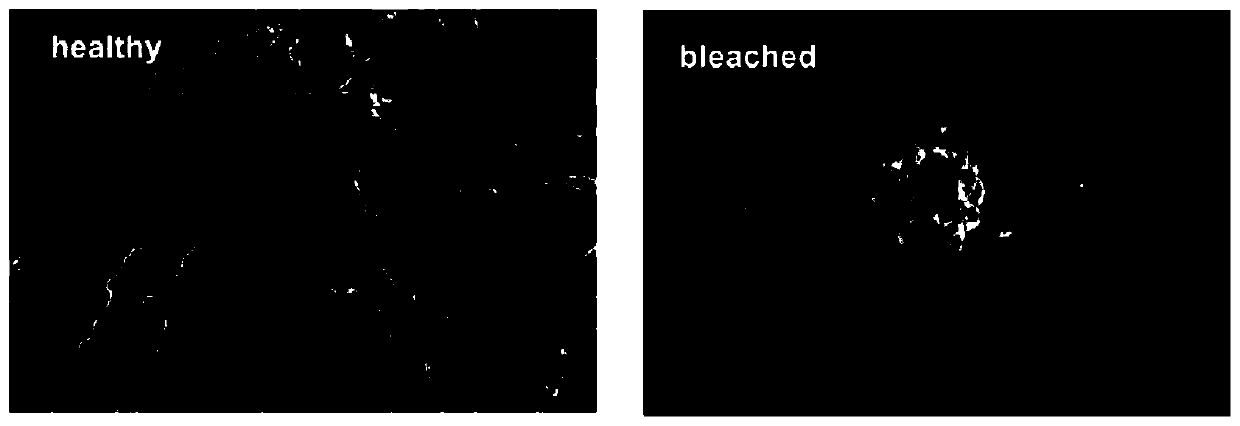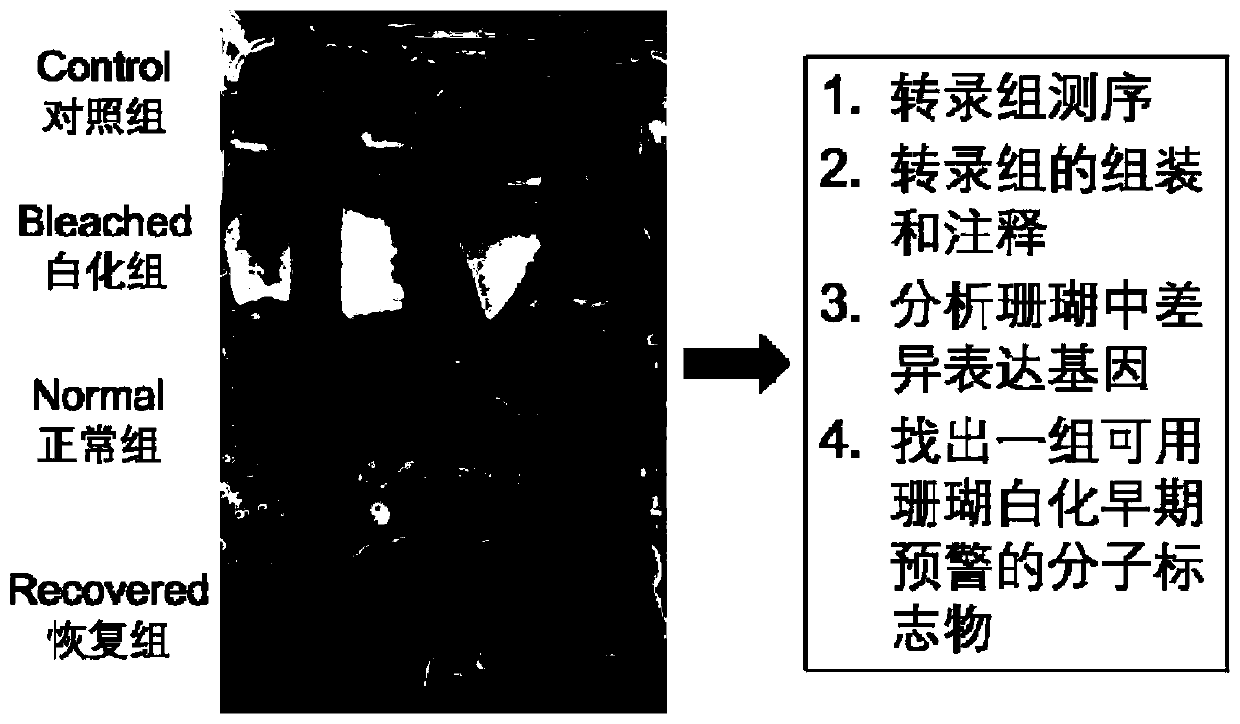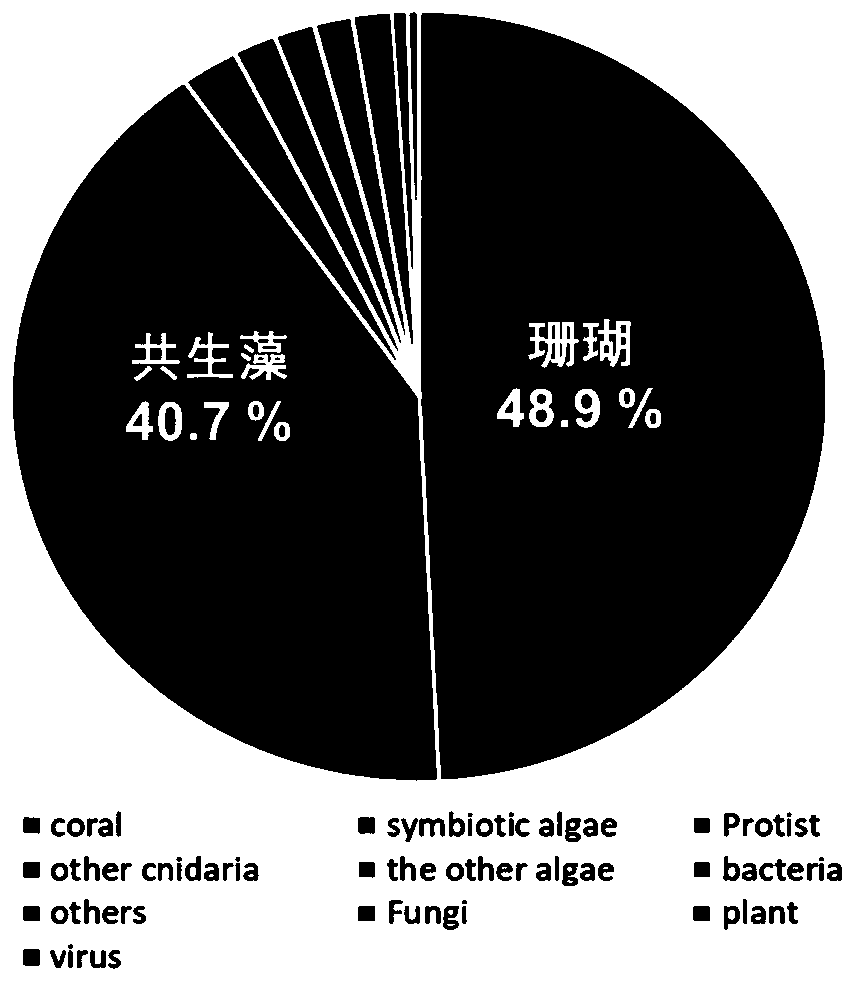Group of molecular markers capable of being used for early warning of whitening of pavona descussata and application of molecular markers
A molecular marker and early warning technology, applied in the fields of application, plant gene improvement, recombinant DNA technology, etc., can solve the problem of poor understanding of the molecular mechanism of coral bleaching
- Summary
- Abstract
- Description
- Claims
- Application Information
AI Technical Summary
Problems solved by technology
Method used
Image
Examples
Embodiment 1
[0027] The field monitoring of embodiment 1 coral thermal bleaching and the collection of coral samples
[0028] We chose the common stony coral, Pavona decussata, as a sample to examine coral bleaching and recovery in the wild. Coral bleaching in Hong Kong generally occurs in summer. Since June 2017, we have been regularly monitoring coral bleaching in Hong Kong. At the beginning of July 2017, control and bleached samples of cross peony coral were collected in Kiu Tsui Chau, Hong Kong by scuba diving. At the same time, we collected non-bleached (normal) samples on the bleached population as a comparison, and marked the sampled corals. The recovered samples after bleaching were collected at the end of September of the same year. The bleached samples, normal and recovered samples were all from the same coral colony, and the control samples were from another coral colony. The morphological pictures of healthy and bleached cross peony corals are as follows figure 1 shown.
...
Embodiment 2
[0030] Example 2 Extraction of Coral RNA, Assembly and Annotation of Transcriptome
[0031] Total RNA was extracted using TRIzol reagent according to the reagent instructions, and then treated with RNase-free DNase I. The quality and concentration of RNA samples were determined using 1% agarose gel electrophoresis and a NanoDrop 2000c spectrophotometer. RNA samples for each species consisted of triplicates. RNA sequencing was performed at the Beijing Genomics Institute (BGI) Shenzhen headquarters using the Illumina X-TEN platform. Before building the library, use Bioanalyzer 2100 to further analyze the concentration of RNA samples.
[0032] The library was constructed using the Oligo dT enrichment method and completed with NEBNext Illumina's Ultra RNA library preparation kit. The sequencing length is 151bp. Sequences with high (>10%) N content comparisons or high reads with low quality (Phred value Q≤20, content >40%) were removed.
[0033]Transcriptome assembly was done ...
Embodiment 3
[0037] Differentially expressed genes in corals in embodiment 3
[0038] Coral differentially expressed genes (DEGs) were obtained by pairwise comparison. The number of DEGs in the coral bleaching group, normal group and recovery group compared with the control group is shown in Figure 4 As shown, for corals, there were 2127 DEGs in the bleached group, 924 DEGs in the normal group, and 586 DEGs in the recovery group, indicating that the gene expression of corals in the bleached group differed most from other groups.
PUM
 Login to View More
Login to View More Abstract
Description
Claims
Application Information
 Login to View More
Login to View More - R&D
- Intellectual Property
- Life Sciences
- Materials
- Tech Scout
- Unparalleled Data Quality
- Higher Quality Content
- 60% Fewer Hallucinations
Browse by: Latest US Patents, China's latest patents, Technical Efficacy Thesaurus, Application Domain, Technology Topic, Popular Technical Reports.
© 2025 PatSnap. All rights reserved.Legal|Privacy policy|Modern Slavery Act Transparency Statement|Sitemap|About US| Contact US: help@patsnap.com



